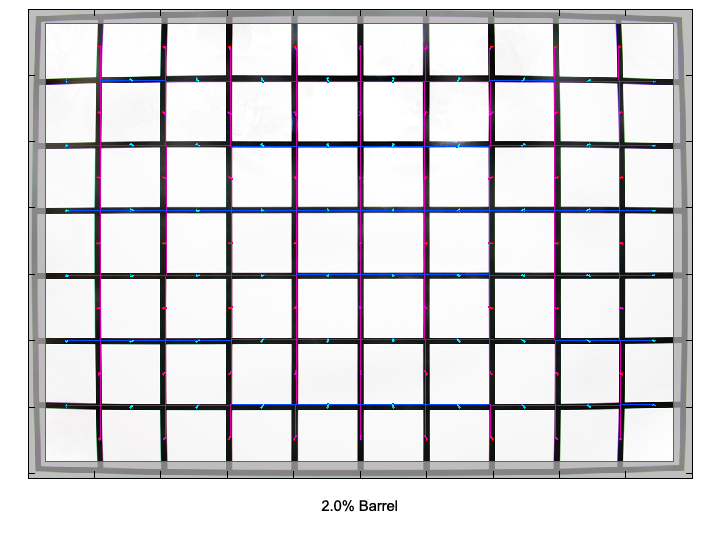|
Tamron AF 10-24mm F/3.5-4.5 SP Di II LD Aspherical IF - Review / Test Report - Analysis |
|
Lens Reviews -
Nikon / Nikkor (APS-C)
|
|
Page 2 of 3

Distortion
Ultra wide angle zoom lenses usually show significant barrel distortion at the wide end. This is also the case here, but with a value of 2% it's less pronounced than with some competitors. Unfortunately the Tamron lens shows only slightly less barrel distortion throughout the rest of the zoom range.
|
Move the mouse cursor over the focal length text marks below to observe the respective distortion
|
| 10mm |
14mm |
18mm |
24mm |
|

|
The chart above has a real-world size of about 120x80cm.
Vignetting
Lenses designed with an reduced image circle for APS-C cameras tend to show a higher degree of vignetting. This is also visible at 10 mm here, where wide open vignetting exceeds one stop and even stopped down remains well above half a stop. However, at all other focal lengths of the zoom range vignetting is actually well controlled.

MTF (resolution)
The lens showed a mixed performance in the lab. At 10 mm the center resolution wide open is already very good and reaches excellent values when stopped down. The borders follow a good deal behind, though, with just fair resolution wide open, which recovers to very good values stopped down. The extreme corners are disappointing, very soft wide open and at f/5.6. Stopped down to f/8 and f/11 (which is what you'll most likely want to use anyway for landscapes) they reach good values.
The situation is simlar at 14mm and 18mm, however there's a drop of resolution in the image center, which no longer reaches excellent values (except for f/8 at 14mm). At 14mm, the extreme corners show only fair resolution, even when stopped down.
Only at 24 mm the lens showed better performance with (just) excellent center and very good border resolution. The extreme corners reach good resolution when stopped down.
Please note that the MTF results are not directly comparable across the different systems!
Below is a simplified summary of the formal findings. The chart shows line widths per picture height (LW/PH) which can be taken as a measure for sharpness.
If you want to know more about the MTF50 figures you may check out the corresponding Imatest Explanations

Chromatic Aberrations (CAs)
At 10 mm the lens shows a large amount of lateral CAs (color shadows at harsh contrast transitions) with almost 3 pixels wide open. Stopping down helps to reduce CAs to lower levels. At longer focal lengths the amount of CAs is better controlled. At 14mm, however, stopping down increases the Level of CAs again.
Please note that CAs can easily be corrected in software or by the camera itself (most modern Nikon DSLRs remove CAs themselves if you shoot JPGs).

|